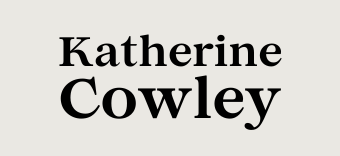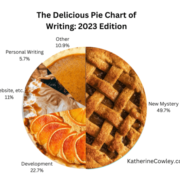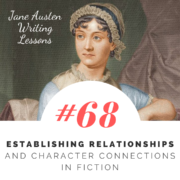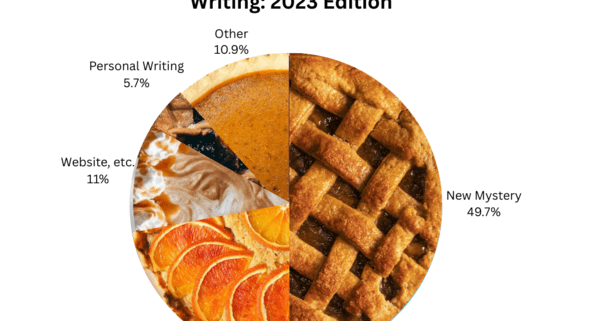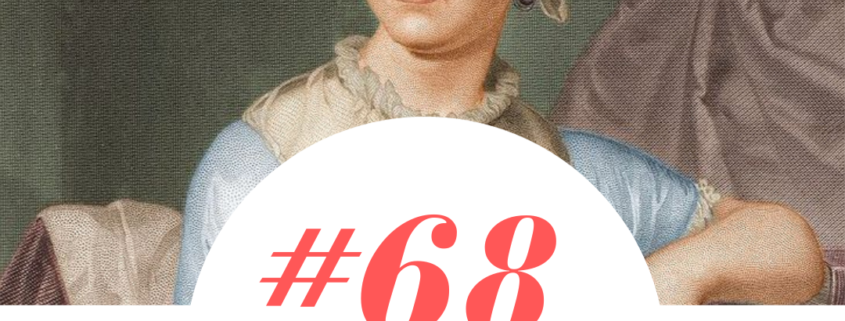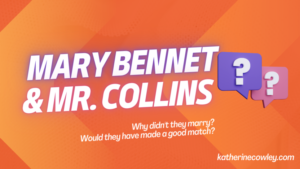Full Sized Blog Element (Big Preview Pic)
2023, A Writing Year in Review: Bulbs and Beavers (and Pie!)
/0 Comments/in Updates, Year in Review/by Katherine Cowley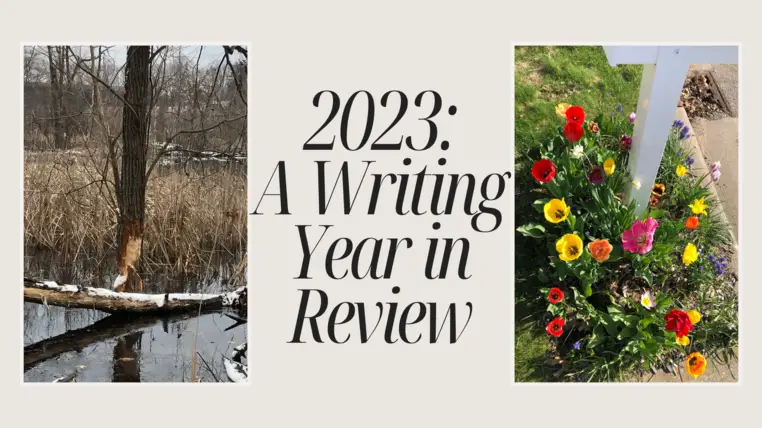
Last year, in 2022, I had two novels and two short stories published, wore fancy dresses and attended two awards ceremonies, ran a successful Kickstarter for a nonprofit, spent 937 hours writing, and had what is, for writing, a rather glamorous year.
This year was very different.
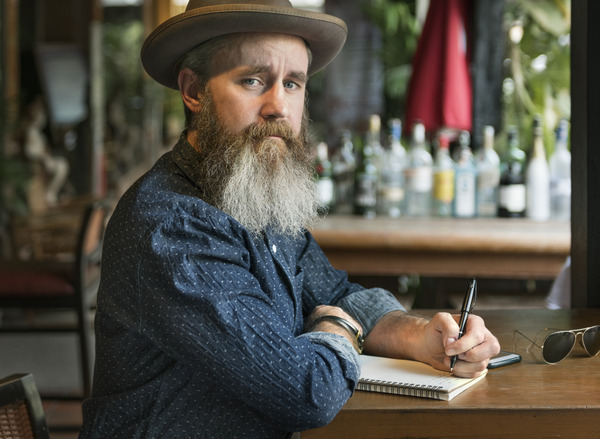
Above: Peak 2023 writing energy. Deposit photos says he is “hipster.” If I owned that hat, maybe I would be hipster too.
In 2023, I had no books published. I attended no award ceremonies. I spent 880 hours writing (which is lower than the amount spent in 2020, 2021, and 2022). I hit a point in the revisions process where my confidence (as a writer) decided to indulge in clichés and completely shatter, like a Corelle soup bowl on the kitchen floor, shards of glass scattering across two full rooms. (Corelle is made of tempered glass, so it’s not supposed to break easily, but in my house, we’ve broken at least four bowls and plates this year.)
Yet right now, as I look back on another year of writing, I feel good about 2023.
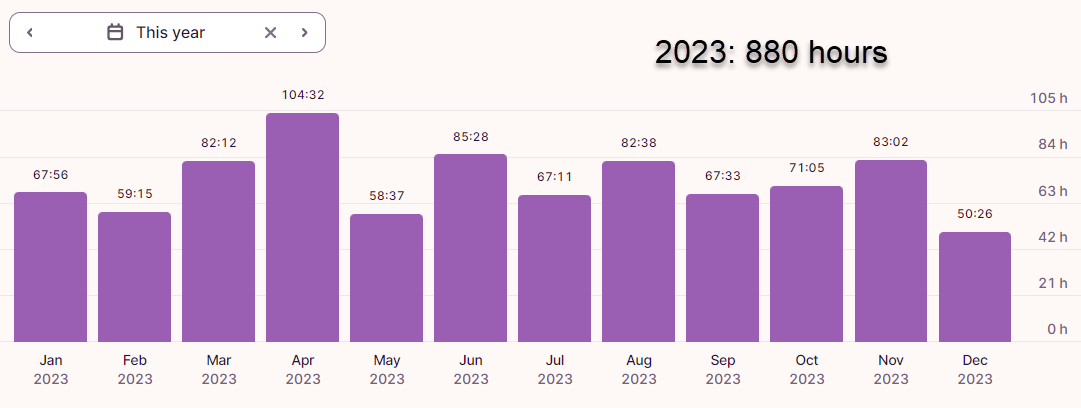
This year of writing was like planting bulbs in the fall with the hope that they’ll come up in the spring. Yes, despite the spicy hot pepper-based deer repellant, the deer might still eat all of them, but chances are, next year I’ll have tulips.

A picture of my tulips from this spring. Unlike in 2022, when the deer ate all my tulips a few days before they blossomed, in 2023 my tulips survived so they could act as a positive metaphor.
This year of writing was also like a beaver, gnawing on trees. There are lots of trees to gnaw on. There’s a lodge to maintain. There’s pesky, flowing water that must be stopped. Sometimes people put up metal netting so you can’t get to the best trees. Sometimes you take down a whole tree at once, but most of the time, that’s not possible. So you start on a few trees and make some progress, knowing that you’ll have time to do the rest later.

These are pictures that I took that show the efforts of the local beavers at the Asylum Lake Nature Preserve in Kalamazoo, Michigan. Every few months, I check on the beavers’ progress.
What trees did I gnaw on this year? Well, there’s a chart for that.
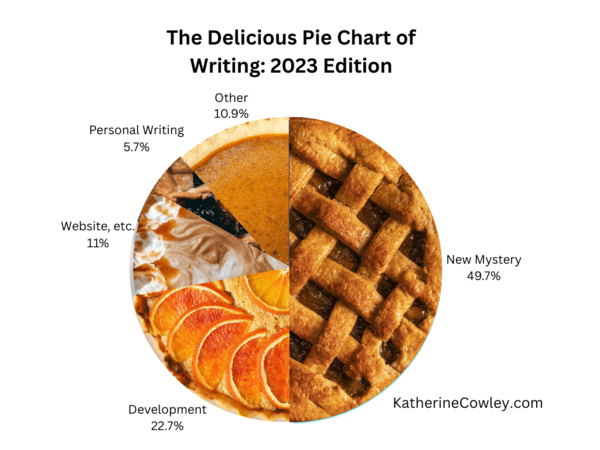
I love charts, I love pie, and I love writing. This collision of all three interests was meant to be.
And now, in classic bar graph form:
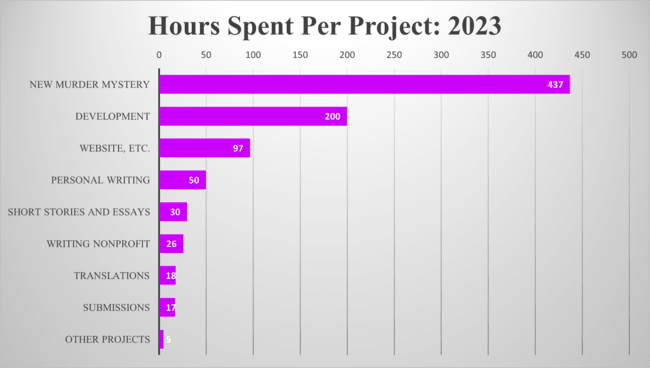
And, because I like writing, some written details for a few of the categories:
New Murder Mystery (437 hours)
These 437 hours are on top of the 227 hours I spent on this book last year, bringing the total up to 664. This is the most research-intensive, complicated, and challenging book I’ve written. It’s also been like making soup—the components have needed time to stew together, so the flavors develop properly.
Development (200 hours)
- Conferences: Malice Domestic and the Midwest Mystery Conference
- Critiquing and writing group
- Networking
- Writing craft and mystery genre research
- Accounting, taxes, and business stuff
- Planning and considering goals
Website, etc. (97 hours)
Website, newsletters, blog posts, and a few book events! My most popular blog post for the year was on Mary Bennet and Mr. Collins.
Submissions (17 hours)
Most of this time was spent applying to an art residency. I didn’t get selected, but I was on the short list, and now I have a very solid concept for a future book that I plan to write.
Looking to 2024
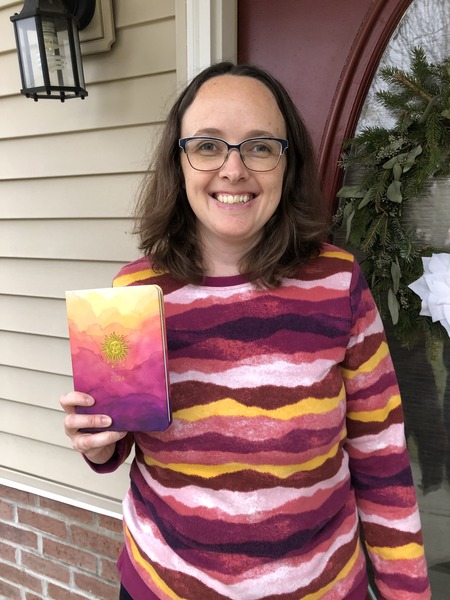
Me with my 2024 planner, which matches my sweater. Maybe I am hipster after all.
I often have a 2-year writing plan, with all my upcoming projects figured out. I don’t right now, and that’s both terrifying and liberating.
I do know that I’ll need to do more revisions on my current mystery novel. I want to write some short stories, and spend a few weeks focusing on reading and doing other things to refill my creative well. I suspect I will start a new book. Will that be a sequel to my current novel or to Mary Bennet? Or something entirely new? Only time will tell.
#68: Establishing Relationships and Character Connections in Fiction
/0 Comments/in Jane Austen Writing Lessons/by Katherine Cowley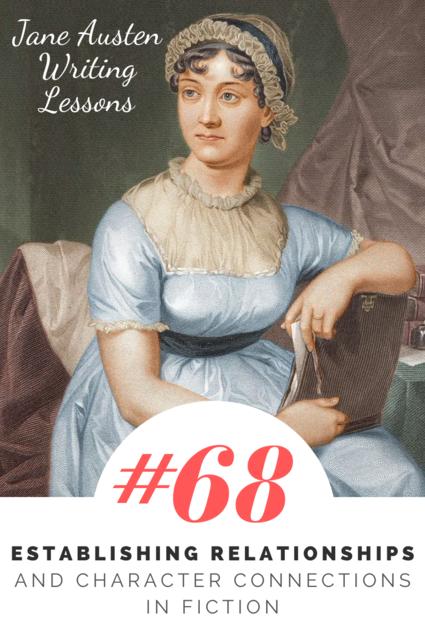
This is the first post in a new series within Jane Austen Writing Lessons which will focus on relationships and character connections. A lot of times we think about relationships as romantic, and we will talk about that (after all, Austen has written some of my all-time favorite romantic relationships). But before we get to that point, we’re going to consider more general principles of establishing character relationships and connections.
In Jane Austen’s novel Emma, the very first spoken dialogue comes from Emma’s father, Mr. Woodhouse. He declares:
“Poor Miss Taylor!—I wish she were here again. What a pity it is that Mr. Weston ever thought of her!”
Miss Taylor is Emma’s former governess. She has recently married Mr. Weston, and as a result she no longer works for Mr. Woodhouse. Mr. Woodhouse is highly opposed to her loss. Emma attempts to convince her father that the marriage is a positive thing, beginning by saying, “I cannot agree with you, papa; you know I cannot.”
In these first few pages of Emma, the relationships and connections between characters begin to unfold:
Miss Taylor is in a romantic relationship with Mr. Weston.
Emma believes she is responsible for their marriage. As a result of this marriage, Emma decides she wants to be a matchmaker, which sets off the novel’s chain of events.
Miss Taylor worked for Mr. Woodhouse.
Clearly, he was highly reliant on her, and he considers his own needs and desires as more important than her own. He feels like his relationship with Miss Taylor can no longer have the same benefits or value. Even the possibility of visiting her seems nigh impossible, though they do not live far away.
Emma is friends with Miss Taylor.
Emma is saddened by the fact that her friend/governess will no longer always be with her—Jane Austen writes, “Sorrow came—a gentle sorrow.” Yet because of their genuine friendship, Emma is pleased at the marriage. Emma is confident that she can retain her connection to her friend even though their circumstances have changed.
Emma and Mr. Weston.
Their relationship is less clear in the opening pages, and their connection is not as strong as that between the other characters; however, Emma declares Mr. Weston to be “a good-humoured, pleasant, excellent man.”
Emma and her father, Mr. Woodhouse.
In the opening paragraphs, the narrator declares that one of the evils of Emma’s upbringing is that she has “the power of having rather too much her own way.” This reflects on her relationship with her father. Emma also has an incredible loyalty to him: she is devoted to staying with him and taking care of him. From the first chapter, we see her trying to help her father by encouraging him to accept their new situation and changing relationships with others.
Even in these first few pages, Jane Austen masterfully establishes the relationships between different sets of characters. Many of these relationships become driving factors in the novel, influencing plot and character, and adding meaning and consequence to the characters’ actions. Some of the relationships shift and change over the course of the novel, while others remain relatively static.
The first definition for the word relationship in the Oxford English Dictionary (OED) is as follows:
The state or fact of being related; the way in which two things are connected; a connection, an association. Also: kinship.
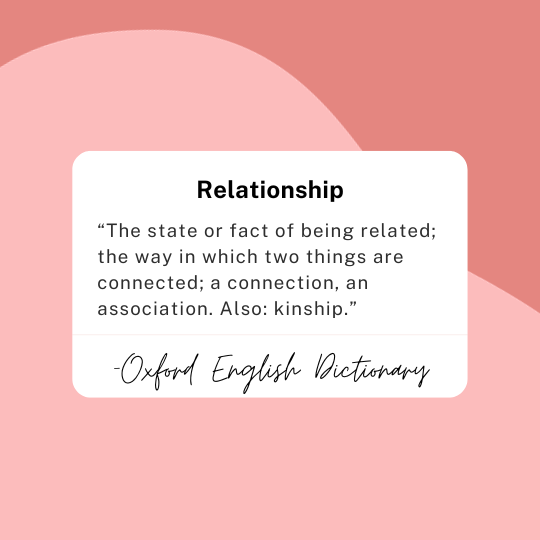
It’s only in definition 2b that the OED defines a relationship in an emotional or sexual way, so let’s linger on this first definition of relationship, in which two people are related or connected in some way.
The primary root for the word relationship is the word relation, which, according to the OED, began to be used in English in around 1398. A relation means there is a “connection, correspondence, or contrast between different things.” Examining the relation between two things means considering why they are associated or what connects them. A relation can also mean “the social interactions that occur and feelings that exist between two or more people or groups of people.”
As you write or revise your own fiction, it’s important to look at the relationships and connections between characters, both ones which involve your main character and relationships which only involve the supporting characters.
As I consider relationships in my own stories, I like to ask:
- What connects people?
- How do two characters know each other?
- How do they feel about each other? Why?
- How does one relationship affect other relationships in the story?
- Is the main character aware of the connections between other characters?
- How do the character relationships manifest on the page, in actions and behaviors?
- What events in the novel will cause shifts or changes in these relationships?
In the coming months, we’ll look more closely at how Jane Austen uses relationship arcs, builds webs of relations, and also constructs romantic relationships. But first, here are some writing exercises.

Exercise 1: Consider the first five to ten pages of your book. Make a list of each relationship that is established and what your reader knows about each relationship so far.
Exercise 2: Find a place that has a number of people and spend a few minutes people watching. If you see any relationships or connections between people, write them down. What sort of relationships do you think these people have? What clues help you understand these relationships?
Exercise 3: Write a scene about two characters who would be unlikely to have any sort of prior connection but do have some sort of relationship (i.e. a friendship, a past, same employer, etc.).
